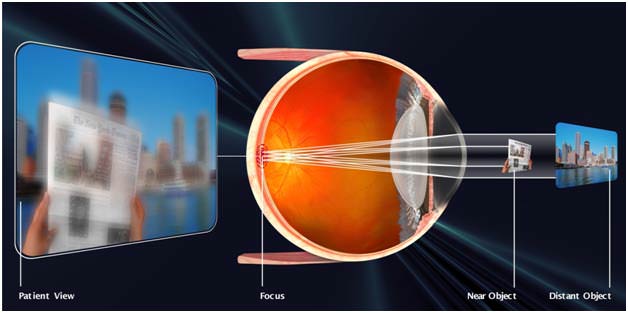Presbyopia is a natural condition of aging, which involves the gradual loss of the ability to focus on near objects. Virtually everyone over the age of 40 is affected with this age-related farsightedness, and need to use glasses for reading and other activities requiring close up vision. Over time, the natural lens of the eye loses its flexibility and it becomes difficult to focus on near objects, and harder to vary focus lengths. The first symptoms most people notice are difficulty reading fine print, particularly in low light conditions, eyestrain when reading for long periods, and momentarily blurred vision when transitioning between viewing distances.
Corrective Procedures for Presbyopia
New Generation Multifocal and Accommodative Lens Implants
Multifocal lenses such as Crystalens, Tecnis Multifocal, and ReSTOR, are designed to correct a full range of vision, from near, far, and everywhere in between.
Conductive Keratoplasty (CK)
A refractive surgery that uses low energy radio waves to change the shape of the cornea and provides patients with the ability to see clearly when reading.
Monovision LASIK
Monovision is achieved during LASIK when one eye is treated for distance vision, and the other one for near vision. Monovision works by completely correcting the dominant eye so that it is focused on distant objects, while leaving a small amount of nearsightedness in the non-dominant eye, in order to allow for near vision. When both eyes are open, the brain will superimpose the two images and see both far and near.

